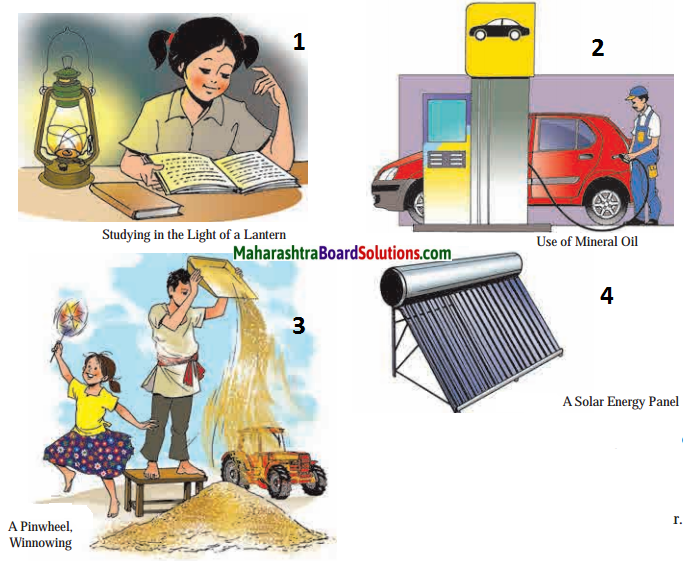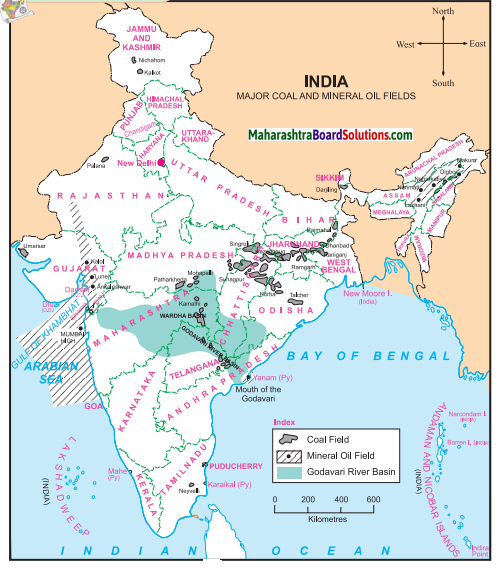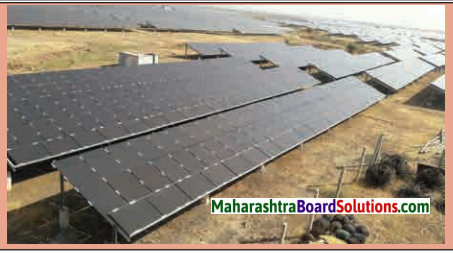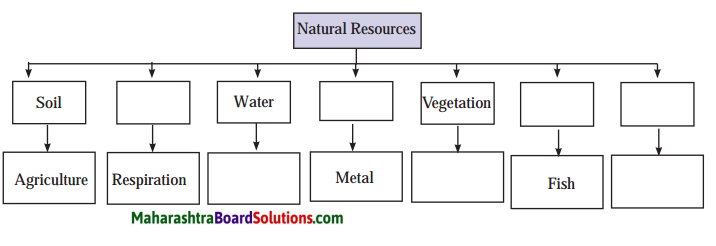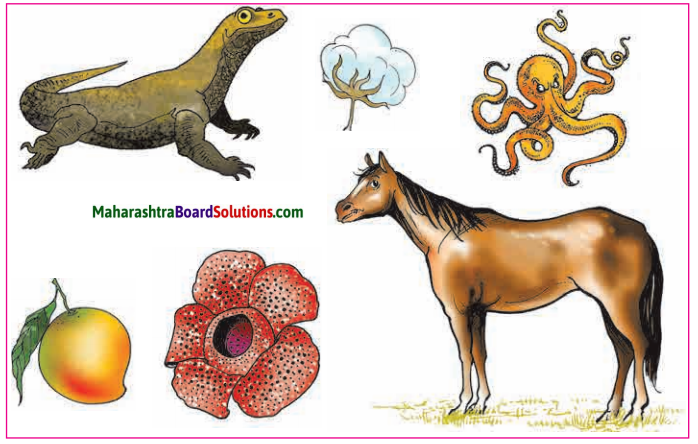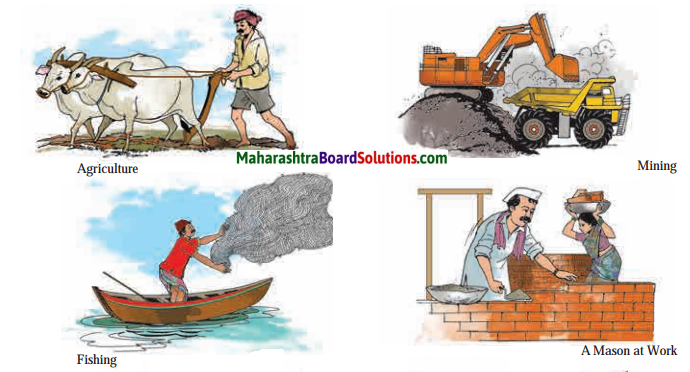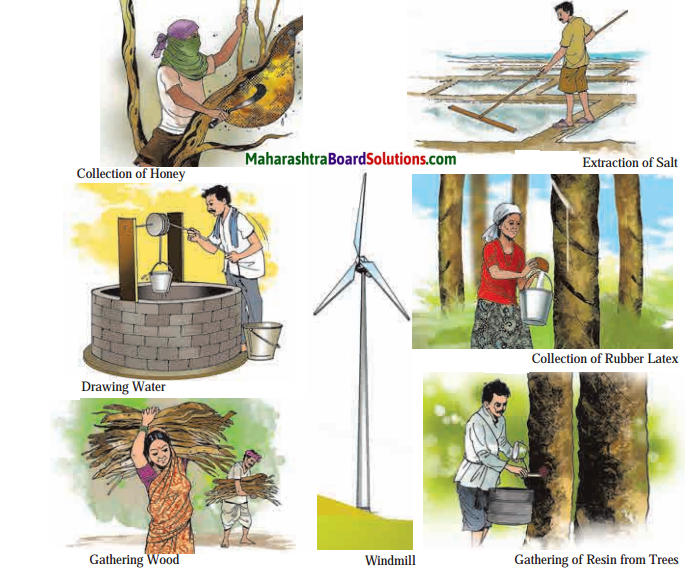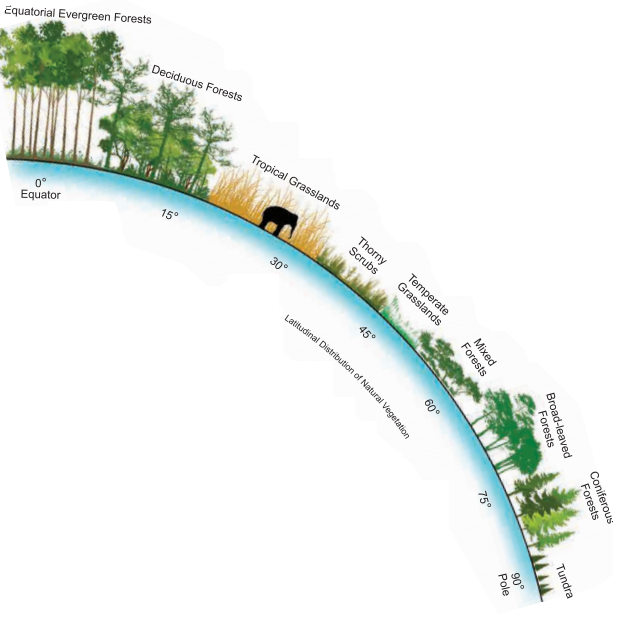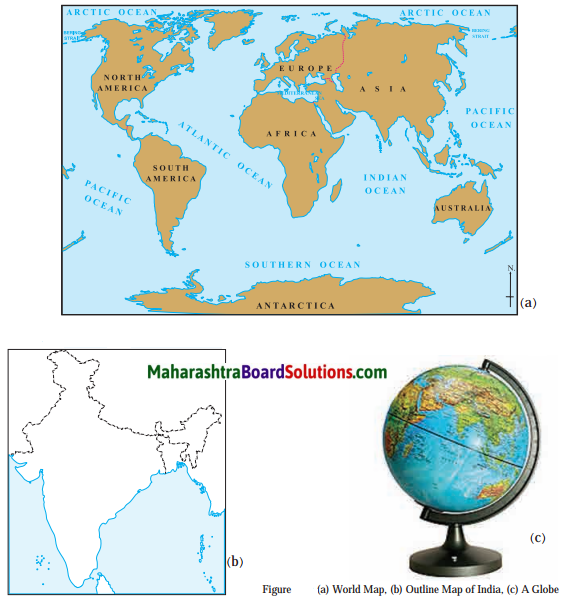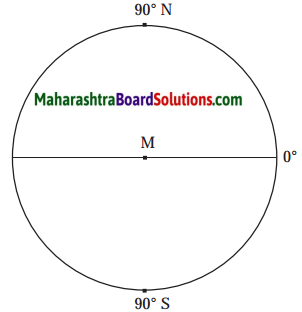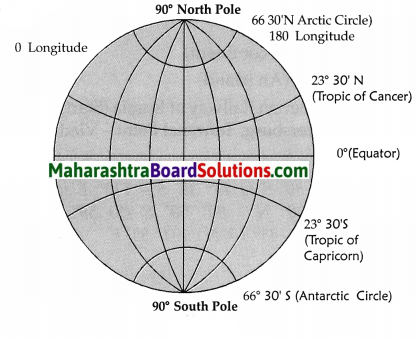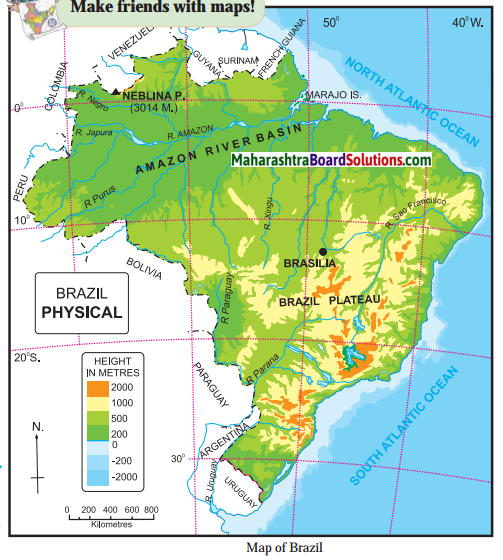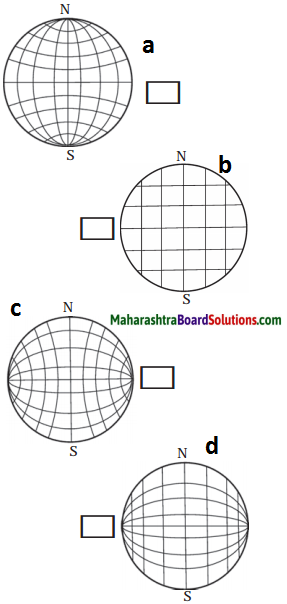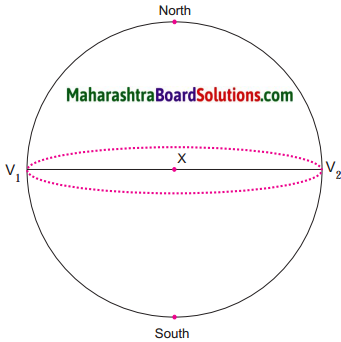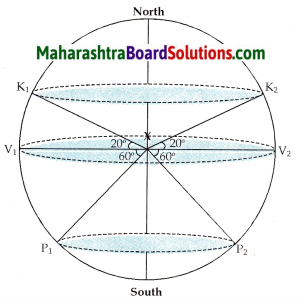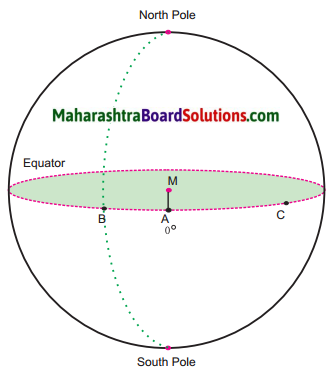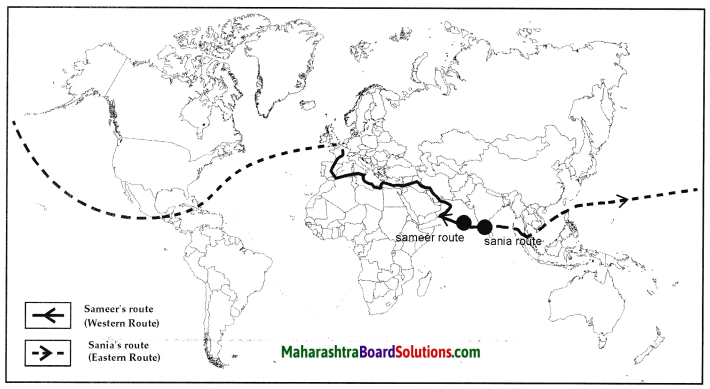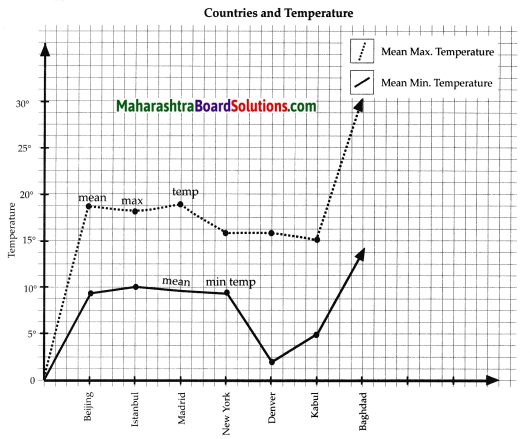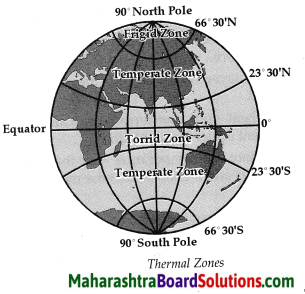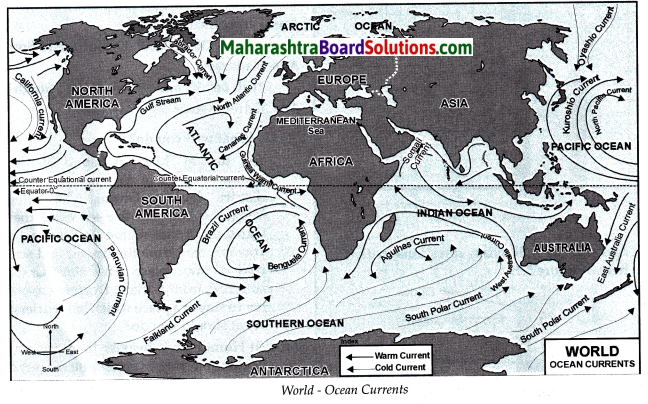Maharashtra Board Class 6 Civics Solutions Chapter 2 Diversity in Society
Class 6 Civics Chapter 2 Diversity in Society Textbook Questions and Answers
1. Fill in the blanks:
Question 1.
To live among a variety of communities is to experience
Answer:
oneness
Question 2.
India is an important ______ nation of the world.
Answer:
secular
Question 3.
Cooperation makes ________ in society healthier.
Answer:
interdependence
![]()
2. Answer each of the following questions in one sentence:
Question 1.
What is meant by cooperation?
Answer:
Cooperation is the process of sharing and helping each other in solving problems and removing difficulties.
Question 2.
Why have we accepted the principle of secularism?
Answer:
We have great linguistic and religious diversity in our country and in order to preserve this diversity in a sound and healthy manner we have adopted the principle of secularism.
3. Answer the following questions in two or three sentences:
Question 1.
What is it that shows the unity in Indian society?
Answer:
- There are many languages, religions, cultures, customs and traditions in the Indian society but despite our differences we are living together for many years.
- This has developed a feeling of oneness amongst us and this oneness has lead to unity in the Indian society.
Question 2.
When do conflicts arise in society?
Answer:
- Disputes and conflicts arise when there is lack of agreement in the opinion, ideas and views of the people.
- Just as there is cooperation in the society, so also at times there can be differences of opinion, disputes and conflicts.
- Prejudices and misconceptions about each other too can also lead to conflicts.
![]()
Question 3.
What are the advantages of cooperation?
Answer:
- Cooperation makes interdependence in society healthier and allows inclusion of everybody in the society.
- It is a process of inclusion and of moving ahead, taking along all the sections of society.
Question 4.
You see two children quarrelling. What would you do?
Answer:
- I will explain to the children that quarelling with one another is bad.
- I will advise them to resolve conflicts through understanding and with a spirit of friendship.
- I will explain to them the importance of tolerance.
Question 5.
You are the Chief Minister of the school cabinet. What are the functions you would perform?
Answer:
I would perform the following functions as the chief minister of the school cabinet:
- Maintain discipline and order in school.
- Ensure that the different committee members of the school cabinet are doing their duties well.
- Coordinate with all the ministers to ensure that the day-to-day activities of the school are carried out in an organised manner.
Activities:
- Set up and run a Students’ Cooperative Store in your school, with the help of your teachers. Write about your experiences of this activity.
- Make a chart of all the rules you follow in the school and in your class and display the chart in your class.
![]()
Class 6 Civics Chapter 2 Diversity in Society Additional Important Questions and Answers
Fill in the blanks:
Question 1.
Lack of cooperation hampers our ______.
Answer:
progress
Question 2.
______ or _______ about each other can also lead to conflicts.
Answer:
Prejudices, misconception
Question 3.
People find a way to resolve conflicts through _____ and ________.
Answer:
compromise, understanding
Question 4.
Conflicts can end if people make efforts to understand each other and show a spirit of ________.
Answer:
tolerance
Question 5.
An understanding attitude leads to a lot of new __________.
Answer:
learning
Question 6.
The ________ and ________ of every individual in a society are well-defined.
Answer:
responsibilities, duties
Question 7.
Lack of cooperation ________ our progress.
Answer:
hamper
![]()
Name the following:
Question 1.
The feeling which leads to unity in Indian Society:
Answer:
Oneness.
Question 2.
Any two aspects wherein diversity is witnessed in India:
Answer:
Language, religion.
Question 3.
The spirit which end conflicts:
Answer:
Tolerance.
Question 4.
Two essential factors which are important for regulation of society:
Answer:
Laws, traditions.
![]()
Complete the analogy:
Question 1.
Secularism : religious harmony :: progress : _______.
Answer:
Cooperation
Question 2.
Prejudices or misconceptions : ________ :: compromise and understanding : tolerance.
Answer:
conflidsw
State whether the following statements are true or false giving reason:
Question 1.
The Principle of secularism ensures that there is no discrimination among people on the basis of their religion.
Answer:
- The above statement is true.
- In a secular state the people of all religions are treated equally by the state.
- No religion is recognised as the official religion of the country.
Question 2.
Conflicts can end.
Answer:
- The above statement is true.
- We can resolve conflicts through compromise and understanding.
- Conflicts can end if people make efforts to understand each other and show a spirit of tolerance.
![]()
Answer each of the following questions in one sentence:
Question 1.
When does disputes and conflicts arise among the people?
Answer:
Disputes and conflicts arise when there is lack of agreement in the opinions, ideas and views of the people.
Question 2.
How can conflicts end?
Answer:
Conflicts can end when people make effort to understand each other and show a spirit of tolerance.
Question 3.
How can we perform different roles?
Answer:
Each individual has several roles and responsibilities and duties of every role are well-defined. While playing these roles, we form bonds with many people. However, changes may occur in the part we play.
Answer the following questions in two or three sentences:
Question 1.
How will you ensure that you contribute – towards national unity?
Answer:
- I will ensure that I respect all the people of the country.
- I will develop a secular attitude and work towards national integration.
![]()
Give one example to illustrate the following points:
Question 1.
Diversity is our strength.
Answer:
We learn to respect each other’s way of life. We even adopt certain traditions from each other.
This helps to increase the feeling of unity in the society which helps us to face many natural and social calamities together.
Question 2.
We have accepted the principle of secularism.
Answer:
- No religion is recognised as the religion of our country.
- Every person has the freedom to worship as per their religion or the religion of their choice.
Question 3.
There are special provisions in the Constitution for the protection of religious and linguistic minorities.
Answer:
- Minorities are free to protect and preserve their linguistic and cultural identities.
- They are also free to bring about the development of their own communities through education.
Write a short note on:
Question 1.
Diversity – our strength.
Answer:
- To live with different groups is to experience co-existence.
- Co-existence helps to increase the level of understanding amongst the people.
- It acquaints us with each other’s traditions, customs and ways of life.
- We learn to respect each other’s way of life.
- We even adopt certain traditions from others.
- This helps to increase the feeling of unity in the society.
- This social unity helps us to face many natural and social calamities together.
![]()
Question 2.
Regulation of society.
Answer:
- In order that society functions smoothly, some rules are required.
- In ancient times society was mostly regulated with the help of traditions.
- But in modern times, along with traditions, laws are needed.
- Law is different from traditions and customs.
- The regulation of society through laws and traditions is carried out by different organizations and institutions.
- The government bodies at the local level also play an important role in the process of regulation of society.
